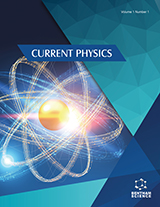Abstract
In this chapter, we describe various mechanisms and characteristics of dissipation, mostly in physical terms, as they have been perceived at the beginning. We get a microscopic understanding of temperature, and of the main dissipation effects. We obtain the entropy dynamics, according to principle two of thermodynamics, from the Pauli master equation, as the simplest description of a system defined by states, occupation probabilities, and transition probabilities. For various expansions of these probabilities as functions of coordinates, stochastic equations are obtained for the time evolutions of these coordinates. In this framework, we describe the electron and hole transport in semiconductors. We present various trials for completing a Schr¨odinger equation with dissipative terms, and the method of projection operators for a description of a system coupled to a dissipative environment.
Keywords: Friction, diffusion, decay rate, entropy, spectral line broadening, correlation, autocorrelation, memory, quality factor, self-organization, chaos, Brownian motion, Markov process, mean free path, collision mean time, mobility, occupation probability, transition probability, field current, diffusion current.













